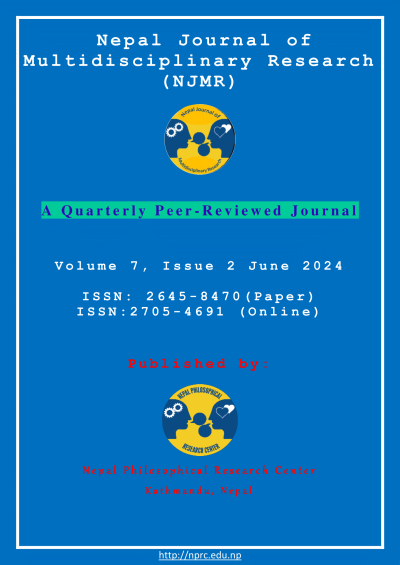Consumption Quintile Groups in the Analysis of Poverty and Development Issues
DOI:
https://doi.org/10.3126/njmr.v7i2.68224Keywords:
Consumption Quintile Groups (CQGs), development Gini coefficient, povertyAbstract
Background: This paper provides computer program which facilitates to create consumption quintile groups (CQGs), and demonstrates some benefits of the created CQGs in the analysis of poverty and development issues.
Methods: The proposed computer program is tested by creating CQGs using the data of 28,670 individuals enumerated in a sample of 5,988 households of Nepal Living Standard Survey (NLSS) III instigated by the Central Bureau of Statistics in 2010/11, and identifies some disadvantages of the lowest 20% of population compared to the highest 20% of population.
Results: Some identified disadvantages of the lowest population are - excessive number of children, low literacy rate among the working-age population and low expenditure on non-food items, including education and health of children.
Conclusion: This paper illustrates how to compute income inequality, an important issue of sustainable development, by Gini coefficient when the income distribution is across the CQGs and the computed value was 0.46.
Novelty: This paper tries to draw attention of scholars on the use of CQGs in the analysis of poverty and development issues.
Downloads
Downloads
Published
How to Cite
Issue
Section
License
Copyright (c) 2024 The Author(s)

This work is licensed under a Creative Commons Attribution-NonCommercial 4.0 International License.
This license enables reusers to distribute, remix, adapt, and build upon the material in any medium or format for noncommercial purposes only, and only so long as attribution is given to the creator.




